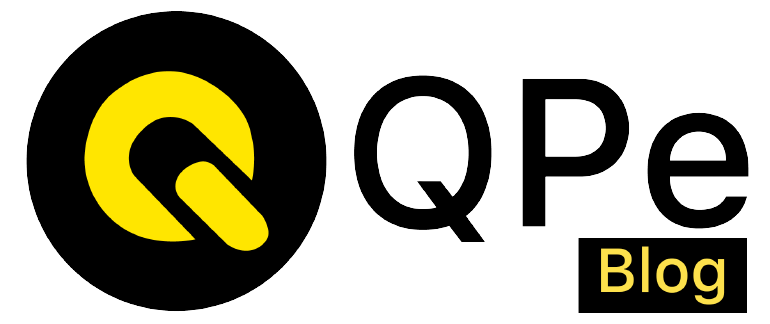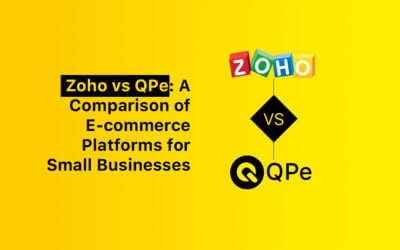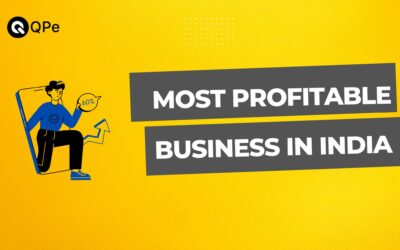The print-on-demand (POD) industry has experienced significant growth in the last five years. Take a look at the facts:
— The global print-on-demand market size was valued at USD 6.18 billion in 2022 and is expected to grow at a compound annual growth rate (CAGR) of 25.8% from 2023 to 2030.
What is fuelling this growth?
– Surge in e-commerce and the demand for customized products.
— More consumers seeking unique and personalized items across categories like apparel, home decor, and accessories.
This is making it an attractive, low-risk business model for those venturing into e-commerce. But then how should you be stepping into this business with ease? What should be the key strategies? Which platform will help you simplify your tasks at one single place?
This and more we will discuss today in this blog…
What is Print On Demand?
Print on Demand (POD) is a flexible and innovative business model that meets the rising demand for printing your own designs etc for creating personalized products and gifts. This system allows sellers to offer a diverse list of items. It could include stylish t-shirts, puzzle games, eco-friendly products with prints, unique mugs, and eye-catching posters, and more.
These all are customized to fit individual customer preferences. One of the major advantages of POD is that it removes the hassles of inventory management and lowers initial costs. This helps in enabling entrepreneurs to concentrate on creativity and design instead of logistics.
Platforms like Qpe have made it easier than ever to start a POD business.
- Users can quickly create their own designs and display them online.
- Helps in attracting potential customers with minimal investment.
- Once an order is placed, a third-party printer handles the printing and shipping. This again helps in simplifying the entire process.
- This model is particularly appealing for creative entrepreneurs who want to go for unique designs, test market trends as well as adapt swiftly to customer feedback.
- Qpe streamlines the journey of launching and growing a business by eliminating the need for storage and shipping.
Pros and Cons of Print-On-Demand
Print-on-demand (POD) businesses have both advantages and disadvantages. Let’s understand them:
| Pros | Cons |
| No need to invest in large print runs. You only pay for products after they sell, reducing upfront costs. | The range of items you can offer may be restricted. |
| There’s no need to handle or store products; saves storage and shipping fees. | Margins are usually smaller than in other e-commerce models. |
| Can experiment with different designs and ideas without financial risk. | Managing returns can be tricky when using third-party printers, as production and delivery can take longer compared to drop shipping |
| A boon for new entrepreneurs to start selling online without major expenses. | Resolving customer issues can be more complex due to third-party involvement. |
5 Innovative Print On Demand Business Ideas
The world has moved on from Photos, photo frames mugs, etc. Today we are sharing unique twists that stand out from the usual t-shirts and mugs:
1. Personalized Travel Journals with Themed Inserts
Create a line of travel journals designed with specific themes, like food, adventure, or cultural experiences.
- Customers can choose themed inserts to match their travel goals
- Or even upload specific travel dates, places, or notes to personalize the pages.
- Adding regional artwork or travel tips for popular destinations could enhance the appeal.
2. Custom Pet Storybooks
Offer a customizable storybook where customers can add their pet’s name, personality traits, or even photos.
- For instance, each book can feature different storylines and adventures, from “A Day at the Park” to “Space Explorer Pets.”
- By mixing personalization with creative storytelling, you cater to the love for pets and children’s books in one unique product.
3. Mood-Based Wall Art Series
Instead of generic wall art, offer a POD series where customers choose artwork based on the mood or ambiance.
- They can actually select what they want to set in their space, such as “Calm Retreat,” “Energetic Workspace,” or “Warm Gathering.”
- Each mood could include a choice of colors and themes
- This can match different interiors, turning decor shopping into a mindful selection experience.
4. Eco-Friendly Print-on-Demand Kids’ Puzzles
Design custom puzzles made from recycled materials.
- It is aimed at young kids learning about animals, numbers, or nature.
- Parents can choose specific educational themes, and even have the child’s name or an educational message printed on the puzzle pieces.
- In turn you end up creating a fun, personalized learning tool.
5. Inspirational Recipe Cards for Wellness and Lifestyle
Offer a collection of recipe cards with wellness-focused recipes, customized for specific diets or health goals.
- Here customers can select categories like “Quick Healthy Meals,” “Vegan Comfort Food,” or “Energy Boosting Snacks,”
- They have the option to personalize the cards with their name or add notes.
- You could package them in a decorative box or a binder with refill options.
How To Start A Print On Demand Business
Step 1: Identify Your Niche
A niche is a specific market segment for specialized products. It will give you benefits like higher profits, less competition and lower ad costs. So how to find a profitable niche?
- Start with what you’re passionate about, like fitness or camping.
- Search for best-selling products for 2024 or check Google Trends to see popular products.
- Tools like Google Keyword Planner or Ahrefs can help you find relevant keywords.
- Target a specific audience (dog lovers or new parents) instead of trying to sell to everyone.
Step 2: Select Products To Offer
To select what to sell in a POD business, combine personal interests with trending products.
- Focus on unique niches (offering custom yoga mats with motivational designs for fitness enthusiasts or personalized recipe journals for foodies).
- Research popular categories using Google Trends or social platforms to spot trends. For example eco-friendly tote bags for sustainability advocates or zodiac-themed apparel for astrology lovers.
- Test designs like quirky office mugs for remote workers or plant care guides for indoor gardening fans.
- Balancing trends with your passions ensures your products resonate with a specific audience. This would boost both creativity and sales potential.
Step 3: Find The Right POD Supplier
To find the right POD supplier you need to focus on 3 key factors – product range, quality, and shipping speed.
- Say, if you’re selling eco-friendly yoga mats, you need a supplier who specializes in sustainable materials.
- Check customer reviews and order samples to assess product quality.
- Make sure they offer reliable global shipping if targeting international markets.
- Finally, review their customization options (packaging and branding) to enhance your customer experience.
Step 4: Set Up Your Online Store
E-commerce tools like Qpe make it easy to launch and grow your POD brand. With Qpe, you have everything you need to set up your online store:

- With ease and without any coding skills.
- Allows new brands to connect with customers around the world and help them achieve their POD dreams effortlessly.
- Qpe provides a seamless experience for all your e-commerce needs.
Step 5: Create Your Product Designs
- Start by identifying your target audience and what they value.
- Use design software like Canva or Adobe Illustrator to craft unique visuals. For instance, if you’re targeting coffee lovers, design quirky coffee quotes for mugs.
- If you’re focusing on eco-conscious buyers, create nature-themed graphics for tote bags.
- Experiment with trends like minimalist designs or custom portraits to stand out and attract attention.
Step 6: Integrate With E-Commerce Platforms
- Start by selecting a popular platform like Qpe for global reach. These platforms offer plugins for major POD services, that too without the need of a coder. This will be enabling automatic product syncing and order fulfillment.
- Additionally, also connect with marketplaces like Amazon to access broader audiences.
- Ensure you optimize listings for international shipping options and local currencies. This will help attract a global customer base.
Step 7: Develop a Pricing Strategy
- Calculate the base cost of production (including printing and shipping).
- Check prices of similar products (of competitors) in your niche to stay competitive.
- Consider the unique features of your designs and brand to justify pricing.
- Test different price points and adjust based on customer feedback and sales performance.
Step 8: Launch Your Store
- Sign up on QPe.
- Decide on your target market and product focus.
- Use themes to customize your items, from clothing to accessories.
- Follow the easy steps to create your online storefront.
- Take your store live instantly.
Step 9: Market Your POD Products
- Use clear, keyword-rich descriptions and high-quality images/short videos to attract search traffic.
- Share unique designs on platforms like Instagram and Pinterest to reach target audiences visually.
- Create exclusivity by offering exclusive and time-limited products.
- Partner with influencers in your niche to expand your reach.
- Attract customers with periodic promotions and package deals.
Step 10: Manage Orders
- Qpe integrates with POD providers, automatically syncing customer orders and sending them directly to production.
- Provide customers with real-time order updates through Qpe’s integrated tracking system.
- Use Qpe’s built-in customer service tools to handle queries and returns in one place, streamlining communication.
- Collect and respond to customer feedback to improve service.
Conclusion
Integrating a Print on Demand (POD) business with platforms like Qpe offers a seamless way to launch and scale your brand globally. With no need for inventory management or upfront costs, POD allows you to focus on creativity while automating product fulfillment.
User-friendly tools make it easy for entrepreneurs to reach wider audiences and fulfill customer needs efficiently, all without requiring technical skills, allowing brands to grow effortlessly in the e-commerce space. Reach out for booking a DEMO.
Frequently Asked Questions:
What Are The Initial Costs Involved In Starting A Pod Business?
Starting a Print on Demand (POD) business has minimal upfront costs. You’ll need to invest in setting up your e-commerce platform, for managing orders and designs, along with marketing expenses. Inventory, printing, and shipping are handled by the POD provider.
Is A Print-On-Demand Business Profitable?
A Print-on-Demand (POD) business is quite profitable. The global print on demand market is expected to grow at a CAGR of 25.8% from 2023 to 2030. The profit margins usually range from 10-35%.
Can POD Be Integrated With All E-Commerce Platforms?
Yes, Print on Demand (POD) can be integrated with various e-commerce platforms, but QPe stands out by offering seamless connectivity and intuitive tools. Its user-friendly interface simplifies the process, allowing brands to effortlessly manage inventory, orders, and customer interactions for growth.
Do You Need a Business License For Print On Demand?
It will depend on which country or region you are operating from. Generally, we suggest that obtaining a license is excellent to operate legally, manage taxes. It also helps credibility with customers, especially if you’re selling merchandise regularly.



